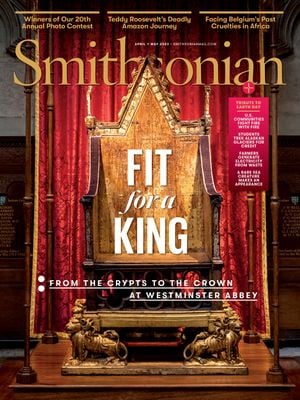The Great Australian Modernist the World Almost Never Knew
A new exhibition shines a light on the stunning work of Clarice Beckett
:focal(1626x1301:1627x1302)/https://tf-cmsv2-smithsonianmag-media.s3.amazonaws.com/filer_public/79/17/7917041d-3b05-4b94-b4d8-15258387be9e/aprmay2023_f01_prologue.jpg)
Clarice Beckett spent most of her adult life caring for her parents, who disapproved of her artistic ambition. But in the soft light of early morning and evening, Beckett roamed Melbourne with an easel, aiming, she wrote, “to give as nearly as possible an exact illusion of reality.” After she died of pneumonia in 1935 at age 48, her father burned many of her canvases. The rest were stored in a shed, where weather—and possums—destroyed all but a few hundred. In the late 1960s, Beckett’s sister brought those to the attention of a Melbourne curator, who exhibited them at her gallery; today she is one of Australia’s most beloved artists.
A major retrospective of her work opens this month at the Geelong Gallery in Geelong, Victoria. Beckett was a modernist who painted deceptively complex pictures, says Jason Smith, the gallery’s director, but to many compatriots their appeal is straightforward. “When we look at her sunsets … roads and telegraph poles, and her images of the city, they are recognizably Australian landscapes.”
/https://tf-cmsv2-smithsonianmag-media.s3.amazonaws.com/filer_public/09/a9/09a9e9dd-dc8a-40e4-845f-0aad7d68cb22/the_beach.jpg)
/https://tf-cmsv2-smithsonianmag-media.s3.amazonaws.com/filer_public/c9/9d/c99dee41-4fa7-444d-956a-e26ed2c629c2/rainy_day.jpg)
/https://tf-cmsv2-smithsonianmag-media.s3.amazonaws.com/filer_public/6d/14/6d141588-c45c-4c47-bcd3-70980023fe60/wet_day_brighton.jpg)
/https://tf-cmsv2-smithsonianmag-media.s3.amazonaws.com/accounts/headshot/amy.png)

/https://tf-cmsv2-smithsonianmag-media.s3.amazonaws.com/accounts/headshot/amy.png)